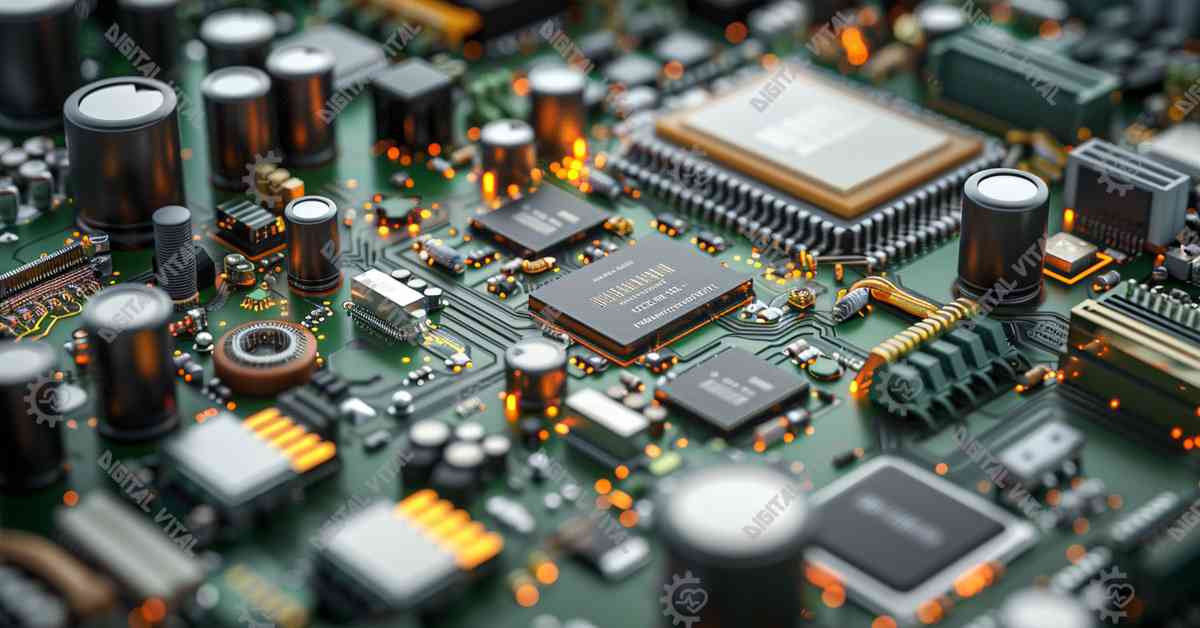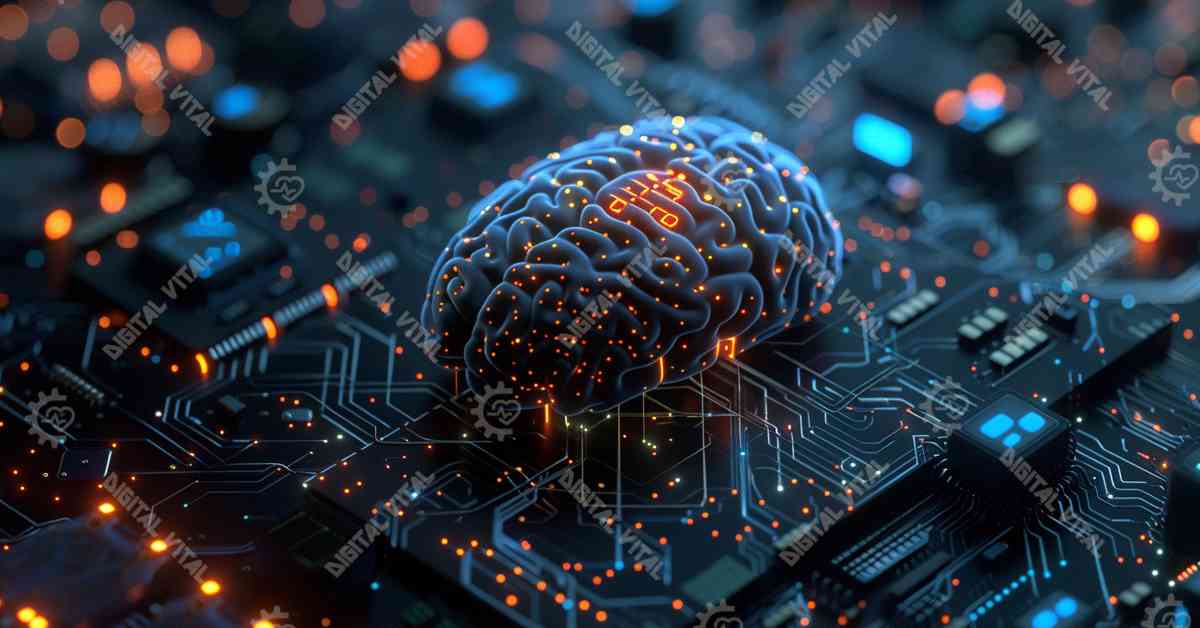The generation of computers has undergone remarkable transformations since the inception of the first electronic machines. Each new generation has brought about significant advancements in technology, performance, and capabilities, shaping the way we live, work, and interact with the digital world. This article explores the historical progression of computer generations, their distinguishing features, and the trends that are driving the development of future computers.
Keywords: generation of computers, computer history, computer evolution, technological advancements, future computers, computing trends, artificial intelligence, quantum computing, computer technology
Table of Contents
The First Generation of Computers (1940s-1950s)
The first generation of computers, spanning from the 1940s to the 1950s, marked the dawn of electronic computing. These machines were characterized by their use of vacuum tubes for circuitry and magnetic drums for memory. They were large, expensive, and consumed significant amounts of power.
Key Features
- Vacuum Tubes: First-generation computers used vacuum tubes as the primary technology for switching and amplification. These tubes were bulky and generated a lot of heat, leading to frequent malfunctions.
- Magnetic Drum Memory: Data was stored on magnetic drums, which provided limited storage capacity and slow access times.
- Machine Language Programming: Programming was done in machine language, the most basic form of programming language, consisting of binary code.
- Punch Cards: Input and output were handled using punch cards, which were used to enter programs and data into the computer.
Notable Examples
- ENIAC (Electronic Numerical Integrator and Computer): Completed in 1945, ENIAC was one of the earliest electronic general-purpose computers. It was capable of performing complex calculations much faster than previous mechanical devices.
- UNIVAC I (Universal Automatic Computer I): Introduced in 1951, UNIVAC I was the first commercially available computer. It was used for various applications, including business data processing and scientific research.
The Second Generation of Computers (1950s-1960s)
The second generation of computers, which emerged in the late 1950s and lasted until the mid-1960s, saw the replacement of vacuum tubes with transistors. This development led to smaller, faster, and more reliable computers.

Key Features
- Transistors: Transistors replaced vacuum tubes, significantly reducing the size and power consumption of computers. They also increased the reliability and processing speed of the machines.
- Magnetic Core Memory: Magnetic core memory replaced magnetic drums, providing faster access times and greater storage capacity.
- High-Level Programming Languages: The introduction of high-level programming languages, such as COBOL and FORTRAN, made programming more accessible and efficient.
- Batch Processing: Computers began to use batch processing, where multiple jobs were processed in a sequence without manual intervention.
Notable Examples
- IBM 1401: Released in 1959, the IBM 1401 was widely used for business applications and became one of the most popular computers of its time.
- CDC 1604: Developed by Control Data Corporation, the CDC 1604 was one of the first commercially successful transistorized computers.
The Third Generation of Computers (1960s-1970s)
The third generation of computers, from the mid-1960s to the early 1970s, introduced integrated circuits (ICs), which further miniaturized and enhanced the performance of computers.

Key Features
- Integrated Circuits (ICs): ICs, or microchips, integrated multiple transistors and electronic components onto a single silicon chip. This advancement significantly increased the processing power and efficiency of computers.
- Multiprogramming: Third-generation computers could run multiple programs simultaneously, improving resource utilization and processing efficiency.
- Time-Sharing: Time-sharing systems allowed multiple users to interact with a computer simultaneously, leading to the development of interactive computing.
- Operating Systems: The development of operating systems facilitated more efficient management of computer resources and user interactions.
Notable Examples
- IBM System/360: Introduced in 1964, the IBM System/360 was a family of compatible mainframe computers that revolutionized the industry by offering a range of models with varying performance levels, all capable of running the same software.
- PDP-8: Developed by Digital Equipment Corporation, the PDP-8 was one of the first minicomputers, offering a smaller and more affordable option for businesses and research institutions.
The Fourth Generation of Computers (1970s-Present)
The fourth generation of computers, beginning in the early 1970s, is characterized by the development of microprocessors, which integrate the CPU onto a single chip. This era has seen exponential growth in computing power, miniaturization, and widespread adoption of personal computers.
Key Features
- Microprocessors: The invention of microprocessors, such as Intel’s 4004, marked a significant milestone in computing. These chips integrated the functions of a CPU onto a single silicon chip, paving the way for personal computers.
- Personal Computers (PCs): The introduction of PCs revolutionized computing by making it accessible to individuals and small businesses. Iconic models like the Apple II and IBM PC became household names.
- Graphical User Interfaces (GUIs): GUIs, popularized by systems like the Apple Macintosh and Microsoft Windows, made computers more user-friendly and accessible to non-technical users.
- Networked Computing: The rise of the internet and networking technologies enabled computers to communicate and share resources, leading to the development of global information networks.
Notable Examples
- Apple II: Released in 1977, the Apple II was one of the first highly successful personal computers, known for its user-friendly interface and expandability.
- IBM PC: Introduced in 1981, the IBM PC set the standard for personal computing and established IBM-compatible PCs as the dominant platform.
The Fifth Generation of Computers (Present-Future)
The fifth generation of computers focuses on advancements in artificial intelligence (AI), machine learning, and other cutting-edge technologies. These developments aim to create intelligent systems that can learn, reason, and interact with humans more naturally.
Key Features
- Artificial Intelligence (AI): AI technologies enable computers to perform tasks that typically require human intelligence, such as natural language processing, image recognition, and decision-making.
- Machine Learning: Machine learning algorithms allow computers to learn from data and improve their performance over time without explicit programming.
- Quantum Computing: Quantum computers leverage the principles of quantum mechanics to perform complex calculations at unprecedented speeds, potentially solving problems that are currently intractable for classical computers.
- Biocomputing: Biocomputing explores the use of biological materials and processes for computing, offering potential breakthroughs in data storage and processing.
Current Trends
- Deep Learning: Deep learning, a subset of machine learning, involves neural networks with multiple layers that can model complex patterns in data. Applications of deep learning include image and speech recognition, autonomous vehicles, and predictive analytics.
- Edge Computing: Edge computing involves processing data closer to the source (e.g., IoT devices) rather than relying on centralized data centers. This approach reduces latency and bandwidth usage, enabling real-time processing for applications like autonomous vehicles and smart cities.
- 5G and Beyond: The rollout of 5G networks promises to enhance connectivity and support the growing number of connected devices. Future advancements in network technology will further enable innovations in IoT, AR/VR, and other emerging fields.
- Blockchain Technology: Blockchain technology offers secure and decentralized methods for recording transactions and managing data. Its applications extend beyond cryptocurrencies to areas such as supply chain management, healthcare, and finance.
Future Directions and Innovations
The future of computing holds exciting possibilities, driven by advancements in various fields. Here are some trends and innovations to watch for:

Quantum Computing
Quantum computing has the potential to revolutionize fields such as cryptography, materials science, and complex system modeling. By leveraging the principles of superposition and entanglement, quantum computers can solve certain types of problems much faster than classical computers.
Example: Companies like IBM and Google are leading the development of quantum computers. Google’s Sycamore processor achieved quantum supremacy in 2019 by performing a calculation in 200 seconds that would take the world’s fastest supercomputer thousands of years.
Artificial Intelligence and Machine Learning
AI and machine learning will continue to advance, leading to more intelligent and autonomous systems. These technologies will impact various sectors, including healthcare, finance, transportation, and entertainment.
Example: Autonomous vehicles, powered by AI, are expected to transform transportation by reducing accidents, improving efficiency, and providing new mobility solutions. Companies like Tesla and Waymo are at the forefront of developing self-driving technology.
Neuromorphic Computing
Neuromorphic computing aims to mimic the structure and function of the human brain, offering potential breakthroughs in processing power and energy efficiency. This approach involves designing hardware that emulates neural networks and synapses.
Example: Intel and other research institutions are developing neuromorphic chips, such as Intel’s Loihi, which can perform complex computations while consuming significantly less power than traditional processors.
Biocomputing
Biocomputing explores the use of biological systems and materials for computing. This emerging field holds promise for innovations in data storage, processing, and sensing.
Example: Researchers are investigating the use of DNA for data storage, which can potentially store vast amounts of information in a compact and stable form. DNA data storage could revolutionize the way we manage and preserve digital information.
Human-Computer Interaction
Advancements in human-computer interaction (HCI) aim to create more intuitive and immersive interfaces, enhancing the way
we interact with technology.
Example: Augmented reality (AR) and virtual reality (VR) technologies are being integrated into various applications, from gaming and entertainment to education and training. Companies like Oculus and Microsoft are developing advanced AR/VR systems that provide immersive experiences and new ways of interacting with digital content.
Sustainable Computing
As the demand for computing power grows, so does the need for sustainable practices. Sustainable computing focuses on reducing the environmental impact of technology through energy-efficient designs, renewable energy sources, and responsible recycling.
Example: Data centers are adopting green practices, such as using renewable energy and advanced cooling systems, to reduce their carbon footprint. Companies like Google and Amazon are investing in sustainability initiatives to minimize the environmental impact of their operations.
Conclusion
The generation of computers has evolved significantly since the early days of electronic computing, driven by technological advancements and innovation. From the first generation of vacuum tube-based machines to the current era of AI and quantum computing, each generation has brought about transformative changes that have shaped our world.
As we look to the future, the continued development of cutting-edge technologies promises to unlock new possibilities and address some of the most pressing challenges of our time. For small businesses, employees, job seekers, and students interested in exploring the potential of computing, DigitalVital offers comprehensive services to help you navigate and thrive in this evolving landscape.
Visit DigitalVital Hub to learn more about our consultancy services, and stay ahead of the curve by integrating the latest computing technologies into your professional toolkit. Explore other articles on our platform to stay updated on the latest trends and insights in computer technology.
By embracing the opportunities presented by the next generation of computers and addressing the challenges head-on, we can drive innovation, improve efficiency, and create a more connected and sustainable future. Join us in leveraging the power of computing to transform society and enhance the quality of life for people around the world.

